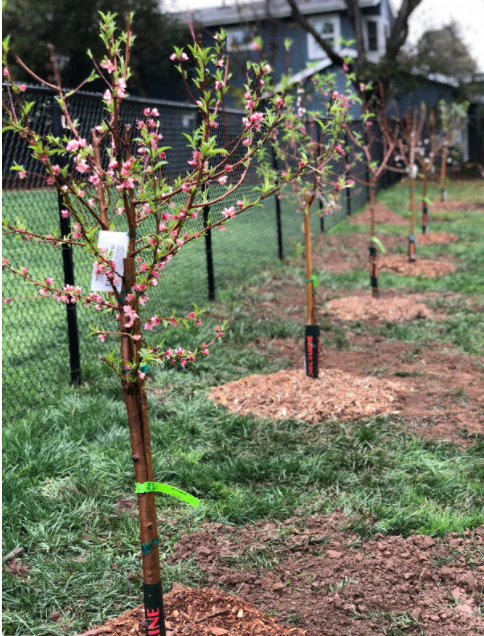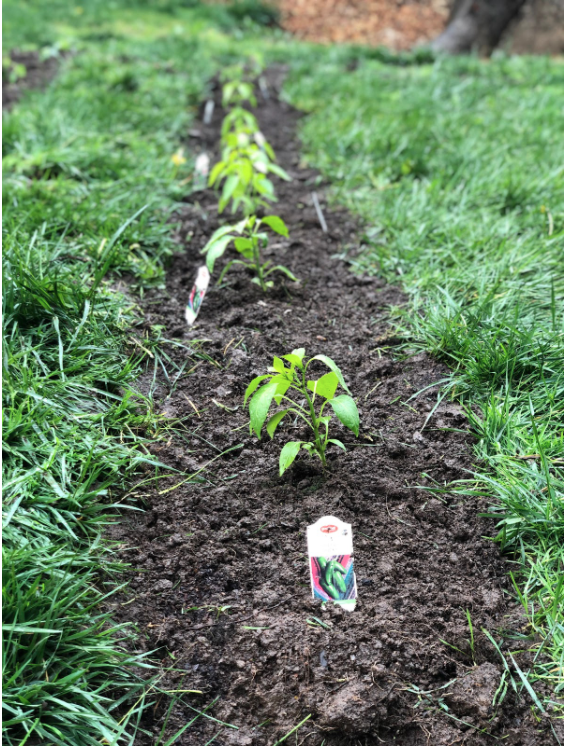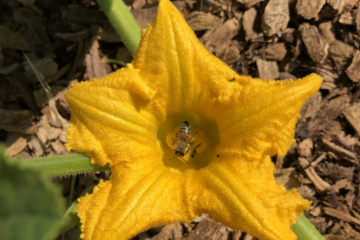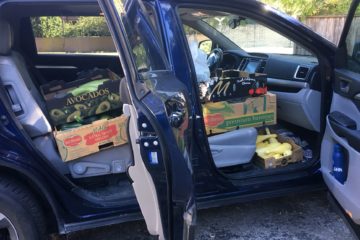Written by Zoee Tanner, Education and Curriculum Development
It’s no question that our current food systems are increasingly unsustainable and leave large gaps in food accessibility particularly in low-income communities of color. The shortcomings of our food systems in such communities and its degradation of natural resources points to a growing need to develop innovative strategies to rethink the food system in a way that is both sustainable for the ever-evolving urban environment and the communities who continue to desperately need access to fresh, culturally-diverse, and nutritious food (Capone et al., 2014). The solution to both of these challenges can arise through the alignment of urban agriculture and food justice though its success is contingent upon its communicative implementation.

Urban Agriculture as a Tool for Food Justice
Urban agriculture at its most basic level can be defined as the growth and development of food in predominantly metropolitan urban areas (Golden, 2013). With that, urban agriculture is quite an expansive term that encompasses a range of various food production operations in the urban landscape. Such operations in urban agriculture can range from personal home gardens to larger-scale urban farms to community gardens, thus urban agriculture can take on a plethora of visions for producing food in the city. Furthermore, economically these various operations differ as well in the way some are for-profit while others are not and instead distribute food through communal means as is the case for Each Green Corner. It is through this broad definition that the scope and potential for urban agriculture takes shape particularly in its intersection with addressing food insecurity and alignment with food justice. Urban agriculture by definition has its roots in directly producing and delivering fresh foods at the local level. This unique capability can prove extremely beneficial in bettering food security in communities, however, it is dependent on its development and application strategy at the community level.
Maintaining an Equity Lens in Urban Agriculture
The strategies used to implement urban agriculture is of major significance given the prevalence of green gentrification which has historically led to urban gardens being used to revitalize neglected neighborhoods in order to attract new higher-income residents at the expense of current residents which are typically low-income communities of color (Anguelovski et al., 2019; Rosan, 2020). With this in mind, some essential questions remain at the forefront of urban agriculture in planning such as how can inclusive green spaces that provide access to fresh foods be created and promoted without negating the very communities they are meant to service? More so, how can it be ensured that community empowerment and resilience remains at its core? This can potentially be achieved by urban planners through deliberate consideration of the social impact of urban agriculture within communities in the development of such green spaces. This deliberate consideration as described by Horst, McClintock, and Hoey (2017) can be defined as an equity lens which provides a framework for governing bodies to evaluate the social impact in the urban agriculture development process much in the same way environmental or economic impact is already considered in planning.
A poignant example of this can be seen in Seattle where the city utilized a racial equity lens to better involve members of disadvantaged communities in decision-making and led to the successful establishment of a permanent community garden program with particular emphasis in low-income and immigrant communities (Horst et al., 2017). Beyond this equity lens, cities and urban planners can also integrate urban agriculture into food justice through alternative policy and practice. Some strategies include, though are not limited to, coordinating and incentivizing the development of affordable housing with urban agriculture access, prioritizing resources and funding to historically disadvantaged communities in pursuing urban agriculture development, and incorporating urban agriculture into long-term planning that ensures its protection from privatization (Horst et al., 2017; Rosan, 2020).
At the core of all of these potential solutions remains an equity-driven mindset that seeks to fight food and environmental disparities and incorporate equity not just in the development process, but in the outcomes of urban agriculture projects as well. This equity requires the highest degree of local community involvement and is essential in addressing the social inequities present in the current food system. It is with this in mind that the future of our food systems can be envisioned as one in which food justice is not simply a possible byproduct of urban agriculture, but an actual driving force that uses urban agriculture as a tool for building equitable and sustainable communities.

Food for Thought
Here are some critical questions to ask yourself when considering the potential for urban agriculture in your community through an equity lens:
- Who will have access to this green space and its produce?
- How will this impact current community residents?
- Will this green space support or harm low-income, disadvantaged community members?
- Is there a plan in place for long-term protection of this green space as a food security access point for current community residents?
References
Anguelovski, I., Connolly, J. JT., Garcia-Lamarca, M., Cole, H., & Pearsall, H. (2019). New scholarly pathways on green gentrification: What does the urban ‘green turn’ mean and where is it going?. Progress in Human Geography, 43(6), 1064–1086. https://doi.org/10.1177/0309132518803799
Capone, R., El Bilali, H., Debs, P., Cardone, G., & Driouech, N. (2014). Food System Sustainability and Food Security: Connecting the Dots. Journal of Food Security, 2(1), 13-22. doi: 10.12691/jfs-2-1-2
Golden, S. (2013). Urban Agriculture Impacts: Social, Health, and Economic: A Literature Review. UC Sustainable Agriculture Research and Education Program. https://ucanr.edu/sites/CEprogramevaluation/files/215003.pdf
Horst, M., McClintock, N., & Hoey, Lesli. (2017). The Intersection of Planning, Urban Agriculture, and Food Justice: A Review of the Literature. Journal of the American Planning Association, 83(3), 277-295. https://doi.org/10.1080/01944363.2017.1322914.
Rosan, C. D. (2020). Making Urban Agriculture an Intentional, Equitable City Redevelopment Strategy. Frontiers in Sustainable Food Systems. https://doi.org/10.3389/fsufs.2020.00074



0 Comments